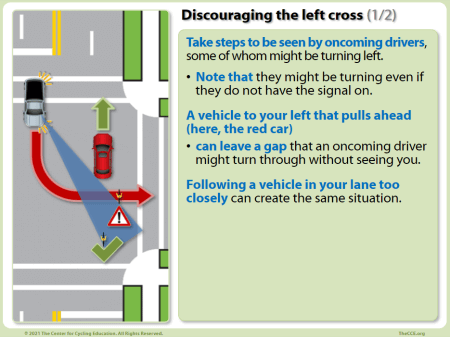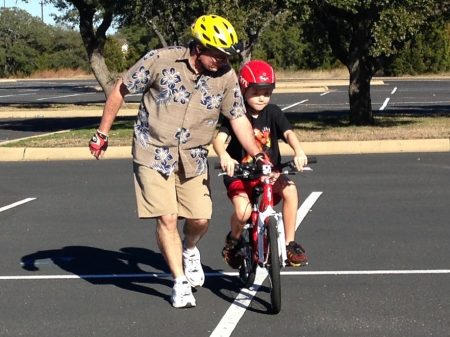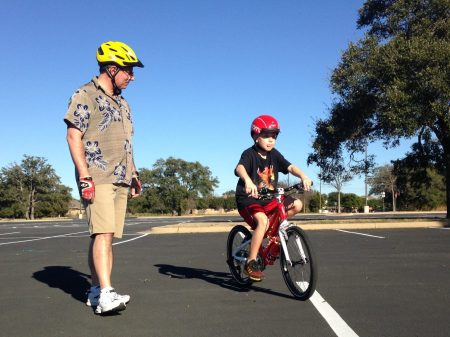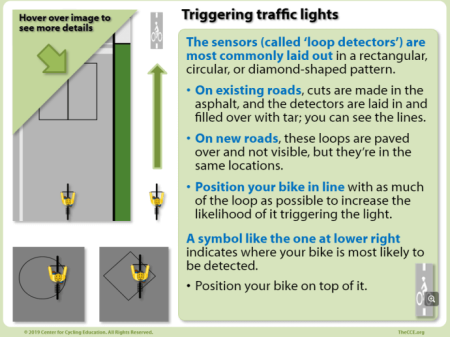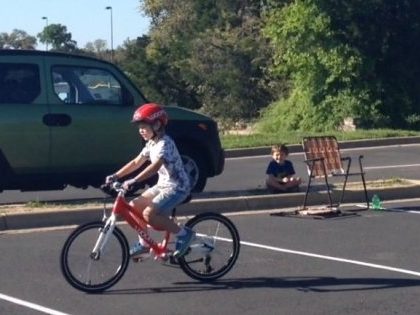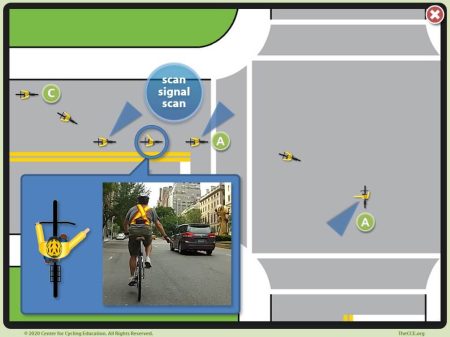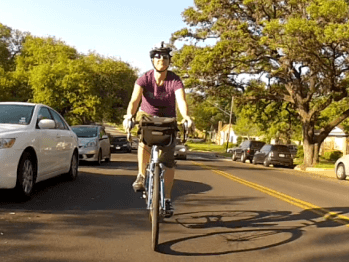…or “but he looked right at me!”
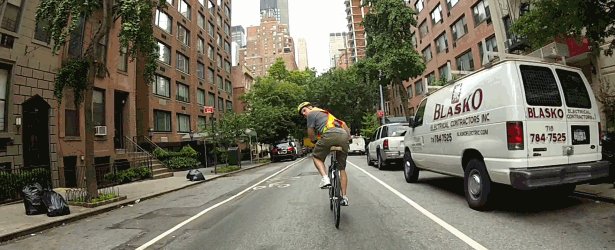
There is no way to confirm that eye contact has been made between two people. Just because someone looks our way, or even appears to look right at us, doesn’t mean they’ve seen us, let alone that they’ve acknowledged our presence or right of way (if we ‘have’ it).
However, we do know that if someone has not looked at us, we can rightly assume they haven’t seen us, and we’d do well to act accordingly.
That said, in all the cycling courses I teach, I suggest that people try to turn every ‘car-bike interaction’ into an interaction between two humans. In the countless human behavior experiments I conduct on a daily basis, I’ve found that this approach yields real benefits.
Trying to make eye contact doesn’t guarantee our safety, but it does help humanize the interaction. In the vast majority of instances, that makes it more likely that I’ll be treated as a human rather than as a target or adversary. (I do know from experience that there is less of a positive response in other locales, but it still works better than not acknowledging the other person.)
The human element
However, I’ll offer an experience to show the benefit of looking for the human in the vehicle. At one time, I lived outside of Toronto and had a ludicrous daily commute by car of 110 kilometres (about 66 miles). This drive was mostly on the 401, one of the busiest highways in North America.
Here’s where I conducted fascinating experiments daily while merging into congested highway lanes. Coming from sedate Vancouver Island, I’d learned that drivers on a highway can be expected to leave space between them and the vehicle ahead for one driver merging from an on-ramp. But we weren’t in Kansas anymore, Toto.
I found that if I so much as turned my head to shoulder-check, the driver in my destination lane (not wanting to be delayed on their highway drive by — gasp! — another vehicle) would close the gap. I soon learned to use my peripheral vision to check the side-view mirror, then signal and merge in one smooth motion once the shoulder-check showed the space was clear. Worked like a charm.
Unless there were no gaps. This is where I learned an important element of human behavior. I found that if I wanted to get into that lane, and the driver (not ‘the car’) wouldn’t let me in, I’d work at catching the driver’s eye. Difficult to do, as people steadfastly avoided eye contact.
I found out why. If someone in the destination lane happened to look over at the same time that I was looking at them, I had about a 70% chance of being let in.
Why? Because they were busted. The car vs. car charade was exposed, and it was just two people, albeit on one of the busiest highways on North America, trying to get to work.
And most times they’d let me in. The same approach works in cycling.
Even if we hide behind tinted windows, we know when we’ve made contact. It’s the human element.
Allan Dunlop
The Center for Cycling Education
